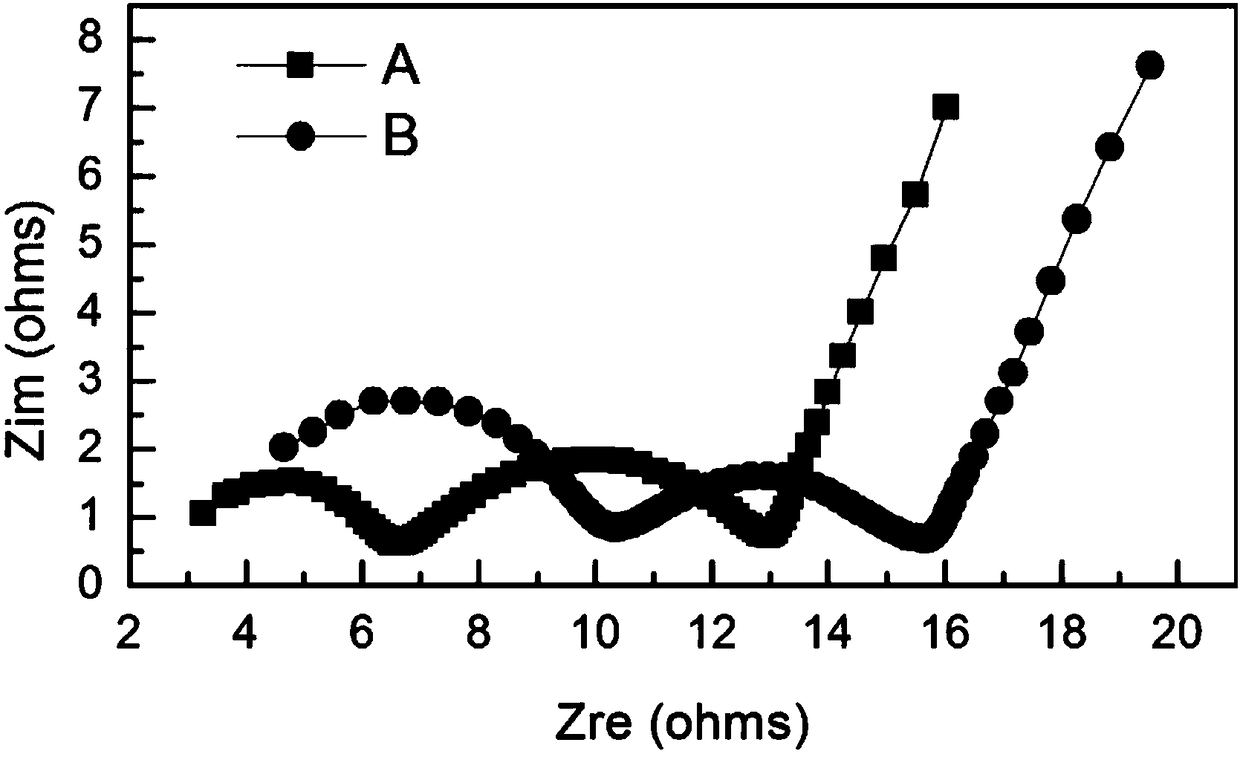Method for evaluating battery material of lithium ion battery by using symmetric battery
A lithium-ion battery and symmetrical battery technology, applied in the field of lithium-ion batteries, can solve the problems that electrode materials cannot be returned, electrode material evaluation cannot accurately reflect the actual state of materials, and electrode material research is lacking, so as to achieve accurate electrochemical performance.
- Summary
- Abstract
- Description
- Claims
- Application Information
AI Technical Summary
Problems solved by technology
Method used
Image
Examples
Embodiment 1
[0030] The method for evaluating the battery material of a lithium-ion battery using a symmetrical battery of the present invention comprises the following steps:
[0031] 1) Take the qualified lithium-ion battery A just produced, charge and discharge at a rate of 1C for 50 cycles, and then charge at a rate of 0.1C to a charge capacity of 50% SOC.
[0032] 2) Disassemble the lithium-ion battery charged to 50% SOC in step 1) in the glove box, take out the positive electrode sheet, and punch the positive electrode sheet into a disc with a diameter of 12.5 mm. Take two positive discs to assemble the button battery. The specific steps are: assemble in the order of positive shell, positive plate, diaphragm with a diameter of 16mm, positive plate, spring plate, and negative shell, and add 4 drops of lithium-ion battery electrolyte ,seal. Then apply a pressure of 0.09 MPa on both sides of the coin cell for 1 second, and then let it stand at room temperature and pressure for 24 hours...
Embodiment 2
[0039] The method for evaluating the battery material of a lithium-ion battery using a symmetrical battery of the present invention comprises the following steps:
[0040] 1) Take the qualified lithium-ion battery C just produced, charge and discharge at a rate of 1C for 50 cycles, and then charge at a rate of 0.1C to a charge capacity of 50% SOC.
[0041] 2) Disassemble the lithium-ion battery charged to 50% SOC in step 1) in the glove box, take out the negative electrode sheet, and punch the negative electrode sheet to obtain a disc with a diameter of 12.5 mm. Take two pieces of negative electrode discs to assemble the button battery. The specific steps are: assemble in the order of positive electrode case, negative electrode sheet, diaphragm with a diameter of 16mm, negative electrode sheet, spring sheet, and negative electrode case, and add 2 drops of lithium-ion battery electrolyte ,seal. Then apply a pressure of 0.1 MPa on both sides of the coin cell for 1 second, and t...
Embodiment 3
[0048] The method for evaluating the battery material of a lithium-ion battery using a symmetrical battery of the present invention comprises the following steps:
[0049] 1) Take the qualified lithium-ion battery E just produced, charge and discharge at a rate of 1C for 50 cycles, and then charge at a rate of 0.1C to a charge capacity of 50% SOC.
[0050] 2) Disassemble the lithium-ion battery charged to 50% SOC in step 1) in the glove box, take out the positive electrode sheet, and punch the positive electrode sheet into a disc with a diameter of 12.5 mm. Take two positive discs to assemble the button battery. The specific steps are: assemble in the order of positive shell, positive plate, diaphragm with a diameter of 16mm, positive plate, spring plate, and negative shell, and add 3 drops of lithium-ion battery electrolyte ,seal. Then apply a pressure of 0.1 MPa on both sides of the coin cell for 1 second, and then stand at room temperature and pressure for 22 hours.
[00...
PUM
| Property | Measurement | Unit |
|---|---|---|
| impedance | aaaaa | aaaaa |
| impedance | aaaaa | aaaaa |
| impedance | aaaaa | aaaaa |
Abstract
Description
Claims
Application Information
 Login to View More
Login to View More - R&D
- Intellectual Property
- Life Sciences
- Materials
- Tech Scout
- Unparalleled Data Quality
- Higher Quality Content
- 60% Fewer Hallucinations
Browse by: Latest US Patents, China's latest patents, Technical Efficacy Thesaurus, Application Domain, Technology Topic, Popular Technical Reports.
© 2025 PatSnap. All rights reserved.Legal|Privacy policy|Modern Slavery Act Transparency Statement|Sitemap|About US| Contact US: help@patsnap.com


